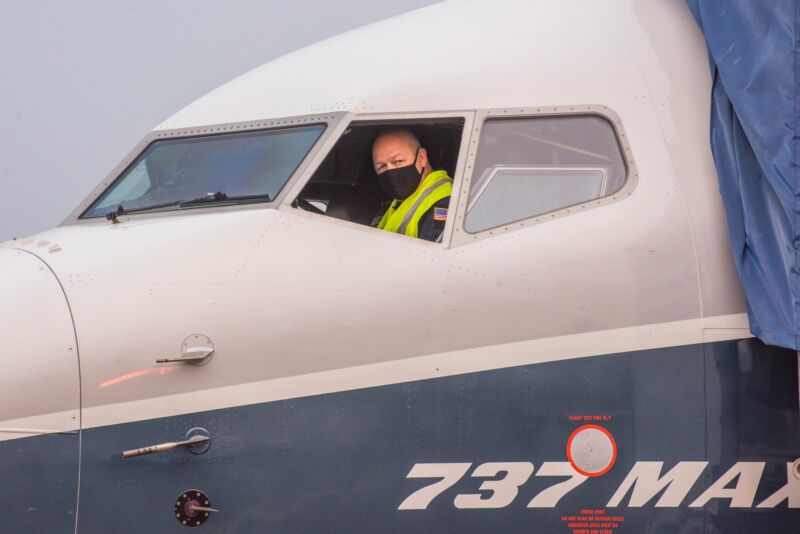FAA chief tests a Boeing 737 MAX—including its infamous flight control software

Enlarge / FAA Administrator Steve Dickson puts a 737 MAX through its paces. (credit: @FAA on Twitter)
On Wednesday, Federal Aviation Administration Administrator Steve Dickson donned his mask and took to the runway at Seattle's Boeing Field to test pilot a now-infamous Boeing 737 MAX. The FAA head was positive about the aircraft during the two-hour flight, as he told reporters at a post-test press conference, "I liked what I saw... it responded well." Still, Dickson and the FAA are not ready to recertify the plane and remain in no rush to do so.
"We are not to the point yet where we have completed the process," Dickson said. "We're in the home stretch, but that doesn't mean that we're going to take shortcuts to get it done by a certain date...The FAA and I in particular will not approve the plane for a return to passenger service until I'm satisfied that we've adequately addressed all of the known safety issues that played a role in the tragic loss of 346 lives aboard Lion Air flight 610 and Ethiopian Airlines flight 302."
LIVE: FAA Administrator Steve Dickson's News Conference on the 737 MAX https://t.co/Y3mRCEmGT4
— The FAA
(@FAANews) September 30, 2020
The FAA's test flight comes roughly a year and a half after two high-profile deadly crashes of Boeing's 737 MAX—one in October 2018 and a second in March 2019—resulted in more than 300 individuals losing their lives. The incidents forced airlines around the world to quickly ground these planes. Investigations revealed that the crashes were due to flaws in the design of the aircraft's Maneuvering Characteristics Augmentation System (MCAS) software. This software tries to help the pilot provide a safer, smoother ride. But in both crashes, a malfunctioning sensor caused the software to mistakenly believe the aircraft was stalling. It then pushed the plane's nose too far down, ultimately leading to a crash.
Read 4 remaining paragraphs | Comments
from Tech – Ars Technica https://ift.tt/3l8xv1b
Comments
Post a Comment